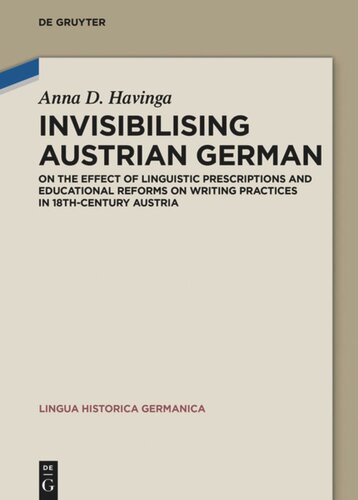

Most ebook files are in PDF format, so you can easily read them using various software such as Foxit Reader or directly on the Google Chrome browser.
Some ebook files are released by publishers in other formats such as .awz, .mobi, .epub, .fb2, etc. You may need to install specific software to read these formats on mobile/PC, such as Calibre.
Please read the tutorial at this link: https://ebookbell.com/faq
We offer FREE conversion to the popular formats you request; however, this may take some time. Therefore, right after payment, please email us, and we will try to provide the service as quickly as possible.
For some exceptional file formats or broken links (if any), please refrain from opening any disputes. Instead, email us first, and we will try to assist within a maximum of 6 hours.
EbookBell Team

5.0
110 reviewsThis book provides an insight into the standardisation process of German in eighteenth-century Austria. It describes how norms prescribed by grammarians were actually implemented via a school reform carried out by educationalist Johann Ignaz Felbiger on the order of Empress Maria Theresa. Quantitative and qualitative analyses were undertaken of certain Upper German features (e-apocope, the absence of the prefix ge- and the ending -t in past participles, and variants of the verb form sind) in reading primers, issues of the Wienerisches Diarium / Wiener Zeitung and petitionary letters. These reveal how such variants became increasingly 'invisible' in writing. This process of 'invisibilisation', i.e. a process of stigmatization which prevents the use of certain varieties and variants in writing, can be attributed to a number of factors: Empress Maria Theresa's appeal for a language reform, the normative work by eighteenth-century grammarians, the implementation of educational reforms, and the early introduction of East Central German variants in newspaper issues.